- TOP
- Mirror with Globeflowers and Flying Sparrows
Overview
Mirror with Globeflowers and Flying Sparrows
- Museum No.
- EK17-14
Showing 1-6 of 1
| Title | Mirror with Globeflowers and Flying Sparrows |
|---|---|
| Designation | |
| Artist | |
| Category | Metalwork(E), Bronze Mirrors |
| Country | Japan |
| Period | Heian Late |
| Century | 12th |
| Year | |
| Quantity | |
| Materials | |
| Dimensions | Diameter 10.9cm Rim height 0.65cm Rim width 0.1cm |
| Inscription by | |
| Signature/Seals Etc | 鏡面に「真妙」と針書 |
| Donor |
Included Works

EK17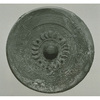 Mirror with Abstract Animals in Band
Mirror with Abstract Animals in Band
EK17-1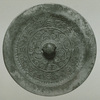 Mirror with Whirlpool Design
Mirror with Whirlpool Design
EK17-2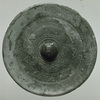 Mirror with Flower Design and Seven Arcs
Mirror with Flower Design and Seven Arcs
EK17-3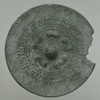 Mirror with Five Animals
Mirror with Five Animals
EK17-4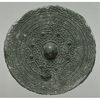 Mirror with Abstract Animals in Band
Mirror with Abstract Animals in Band
EK17-5 Mirror with Four Animals
Mirror with Four Animals
EK17-6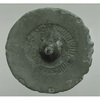 Mirror with Tooth Comb Pattern
Mirror with Tooth Comb Pattern
EK17-7 Mirror with Abstract Animals in Band
Mirror with Abstract Animals in Band
EK17-8 Mirror with Pines and Cranes
Mirror with Pines and Cranes
EK17-9 Mirror with Cranes and Pines and Butterflies
Mirror with Cranes and Pines and Butterflies
EK17-10 Mirror with Arabesque and Phoenixes
Mirror with Arabesque and Phoenixes
EK17-11 Mirror with Chrysanthemums and Birds
Mirror with Chrysanthemums and Birds
EK17-12 Mirror with Chrysanthemums, Butterflies, and Birds
Mirror with Chrysanthemums, Butterflies, and Birds
EK17-13 Mirror with Chrysanthemum Branches and Flying Sparrows
Mirror with Chrysanthemum Branches and Flying Sparrows
EK17-15 Mirror with Autumn Plants, Butterflies, and Birds
Mirror with Autumn Plants, Butterflies, and Birds
EK17-16 Mirror with Cranes and Pine Needles
Mirror with Cranes and Pine Needles
EK17-17 Mirror with Auspicious Flowers and Birds
Mirror with Auspicious Flowers and Birds
EK17-18
This object may be one within a set or the title of a set. To see all objects in the set, perform a Category Search by the Museum Number below, entering numerals only before the hyphen.

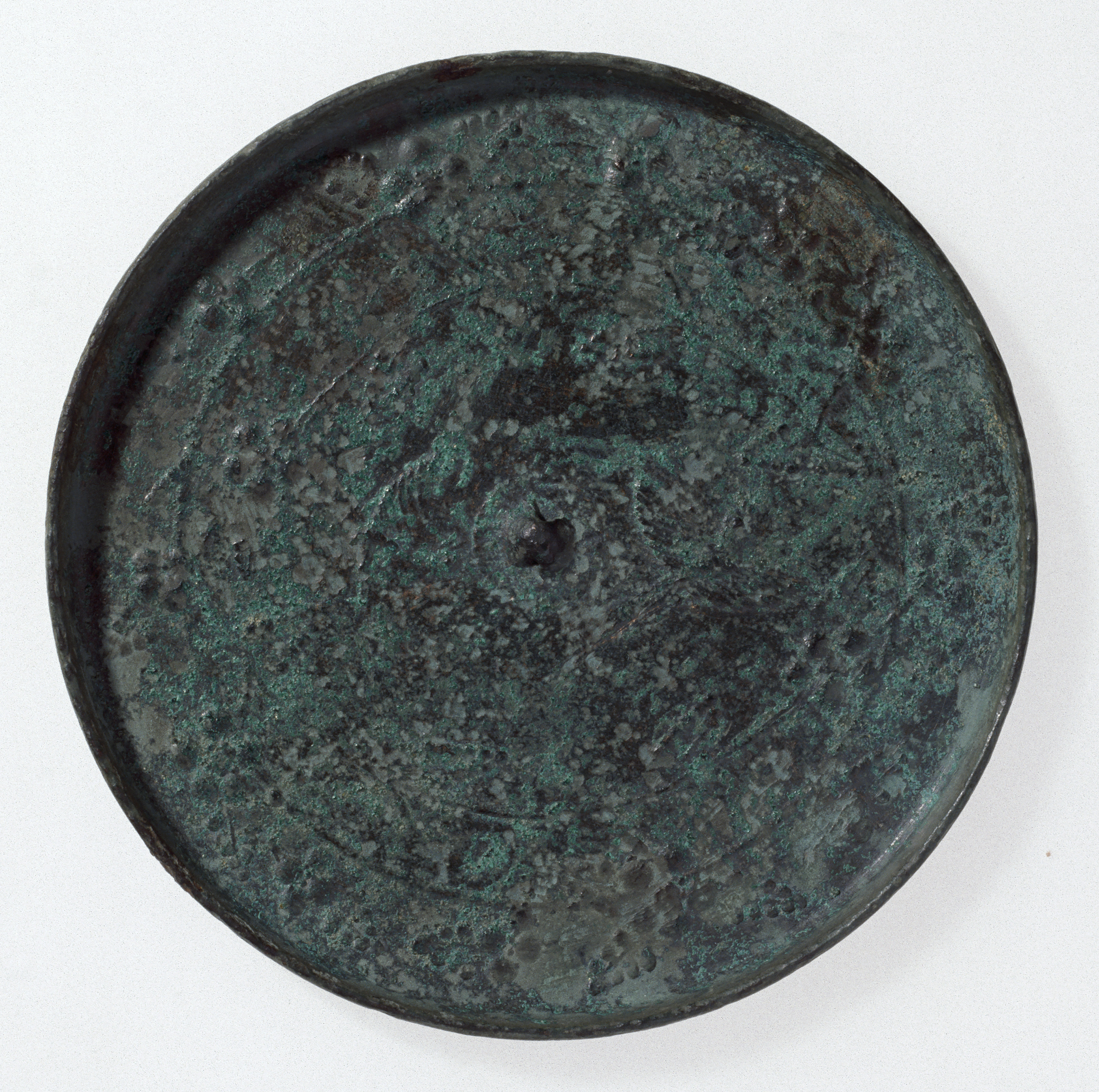





Deep blue-green in color, the thin body of this mirror is about 1 mm in thickness, with a narrow, outward flaring rim, and a knob surround of twisting chrysanthemum petals. A pair of small birds fly around the knob, while towards the outer band of the pictorial space, flowers and leaves spring in profusion from the trailing stems of the kerrias (J., yamabuki). This mirror is said to have been excavated from a sutra mound at the mountain Kinbusen in the village of Amakawa, Nara Prefecture.
A mirror excavated from the Mitarai Pond near Mount Haguro in Yamagata Prefecture is closest in composition to this museum example. Due to rust, the pattern is indistinct, but that is also characteristic of this style of mirror, in which the handling of the spatula left only shallow marks on the surface. Along with Mirror with Cranes and Pine Needles (EK17-9) and other mirrors patterned with pines and cranes, similar examples have been excavated from sutra mounds throughout Japan dating to the latter half of the 12th century.
Japan-Heian-Late